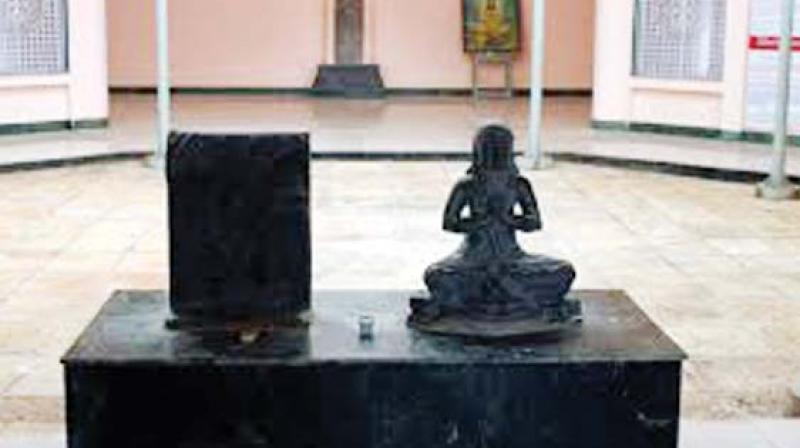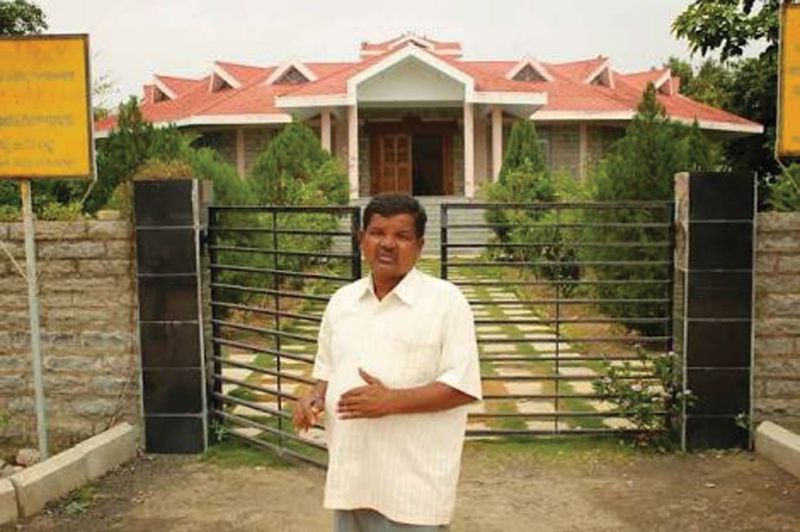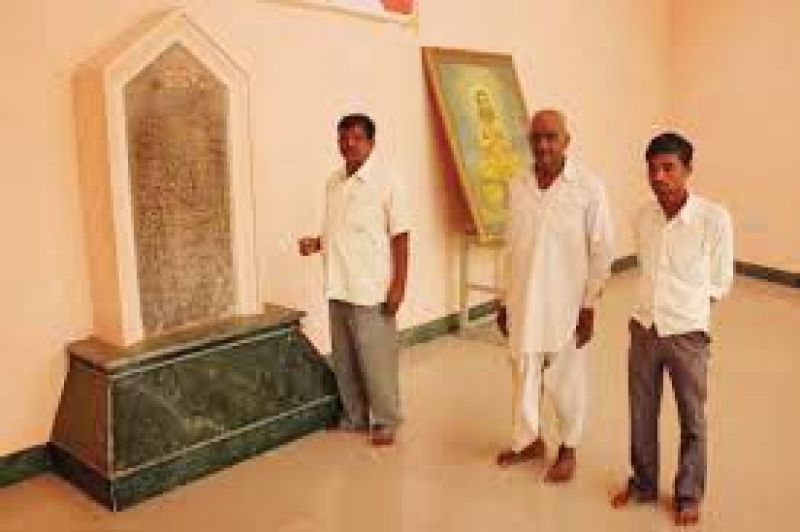Sunday Story: Ignoring Vijnaneshwara - There can't be a greater crime!

In a land of a billion people, a million customs and hundreds of law treatises, deciphering the ancient texts and drawing up a common law to govern and make sure all are governed by the same rule, is no simple task. A legal luminary from Karnataka did it in the 11th century and has become a hallowed name in the annals of legal history but in Martur, his native village near Kalaburagi, a project to set up a research centre in his name has fallen into bad times, forgotten and ignored by those in power. K.N. REDDY highlights the monumental neglect of a legend, who should have been one of Karnataka’s leading lights of all time.
Former SC judge Markandey Katju says Mitakshara was accepted as an authoritative text on Hindu law not through any promulgation by a sovereign authority, but due to the scholarship, logical analysis and sheer intellectual force of its author.
Martur ironically, remains what it has always been - sleepy and calm, undisturbed by the presence of the Vijnaneshwara Bhavan and Research Centre in its midst. Built in memory of the 11th century legal luminary, Vijnaneshwara, who wrote the famous ‘Mitakshara’ that became the basis of Hindu law and Indian jurisprudence, the Bhavan opened its doors here in 2009 with the promise of becoming one of the major law universities and research centres of the country.
But approach the building that houses it and you see that all is not well. The watchman, a man in his late fifties, who opens the gate, explains while glancing at the name board with all its letters erased, “Everything is gone due to the rain Sir.”
 Infographic
Infographic
Step inside and you see more signs of neglect. The grass is overgrown in the lawns around the Bhavan and the bushes in the six acre park in front of it seem far too many. Ask the watchman how many people work at the centre, and his response is shocking. “Only two sir, myself and a lady, who is a sweeper,” he says.
Probe more and he admits gingerly, “You are right sir, but for the occasional visit by some law professor or retired judge and the organising of NSS camps by local institutions, not much activity takes place here.”
It was only in the early 20th century that Martur's link with Vijnaneshwara was revealed. Little was known about where and when he lived, and the place he penned his Mitakshara until Prof P.B. Desai of Dharwad wrote in the journal, " Prachina Karnataka: Hosa Belaku" (Ancient Karnataka: New Light), on February 1, 1932, about a stone inscription in the Kalingeshwara Temple in Martur, which disclosed that Vijnaneshwara was a Kannadiga born in Masemadu village of Bhalki taluk in Bidar district.
 The watchman of Vijnaneshwara Bhavan and Research Centre
The watchman of Vijnaneshwara Bhavan and Research Centre
And it was only recently that the famous epigraphist, Sitaram Jagirdar, took a paper impression of the Martur inscription, and published its contents. Going by Dr Jagirdar the stone inscription, which dates back to 1124 AD, says it was at Martur that Vijnaneshwara wrote his famed legal treatise and was gifted lands and honoured by Emperor Vikramaditya the VI of the Chalukya dynasty in recognition of his merit and contribution.
 Visitors at Vijnaneshwara Bhavan
Visitors at Vijnaneshwara Bhavan
Until the Martur inscription came to light, it was believed that Vijnaneshwara was born in the Kalyan region of Maharashtra. The revelation was a feather in the cap of Karnataka as the laws in India relating to the Hindu joint family, distribution of property, property rights, stree dhana (women property), and succession are still governed by Mitakshara. Though written 10 centuries ago in the south of the country by a Kannadiga, its authority spread all over India, except Bengal and Assam where the Dayabhaga prevailed. Today it is accepted as the authoritative text on Hindu law from Kashmir to Kanyakumari.
A former judge of the Supreme Court, Markandey Katju says the Mitakshara was accepted as an authoritative text on Hindu law not through any promulgation by a sovereign authority such as a king or parliament, but due to the tremendous scholarship, logical analysis and sheer intellectual force of its author.
“The importance of the Mitakshara lies in the fact that it made traditional Hindu law secular. Until it came into existence, Smritis and commentaries were largely religious and not secular. It was the Mitakshara which made the laws on property and inheritance secular,” Justice Katju observes, also noting that it liberalised the law on women, providing for maintenance of not only a “chaste” wife but also of an “unchaste wife or widow.” Due to Vijnaneshwara’s progressive views, women also became entitled to hold and inherit property, he recalls.
Greatly impressed by the earliest translations of Mitakshara by H.T. Cole Broke of the UK (1867), and by Prof J.R. Gharapure of Pune (1912), that he came across while writing his book, “Legal and Constitutional History of India” in 1970, former Governor, M Rama Jois, who also served as the Chief Justice of Punjab and Haryana High Court, took the initiative to build a Bhavan in Martur in memory of the great man. The project cost one crore, which he put together with donations from philanthropists and aid from the government. A local farmer, Gundappa Kambar donated half-an-acre for the centre. Besides sanctioning six acres of land for a park, the then Yeddyurappa government in the state also released Rs 1.30 crore for its development.
Senior Journalist, Srinivas Sirnoorkar, who authored the book “Mitakshara of Vijnaneshwarana,” is unhappy about the Bhavan’s neglect and the lack of research on its campus despite the fanfare surrounding its opening. Recalling that the state government had started a law college in Martur in Vijnaneshwara’s memory, he laments that it has now been shifted to the Gulbarga University due to lack of facilities in the village.
“In addition, a Vijnaneshwara Study Chair on Mitakshara and Human Rights has been established and a PG course started in Dharmashastra on him. But unfortunately all the academic and research activity here has come to a standstill,” Mr Sirnoorkar regrets, suggesting that the Bhavan should be taken over either by the Gulbarga University or the state Law University and upgraded to an international centre.
In the course of a thousand years, Vijnaneshwara’s prophetic wisdom and striking logic have remained infallible, standing up to the persuasive arguments of innumerable legal eagles.
But in Martur, at the Vijnaneshwara Bhavan surrounded by bushes, there’s nothing happening to remind anyone that Karnataka is doing its bit to give its great son the prideful place he deserves in history.

